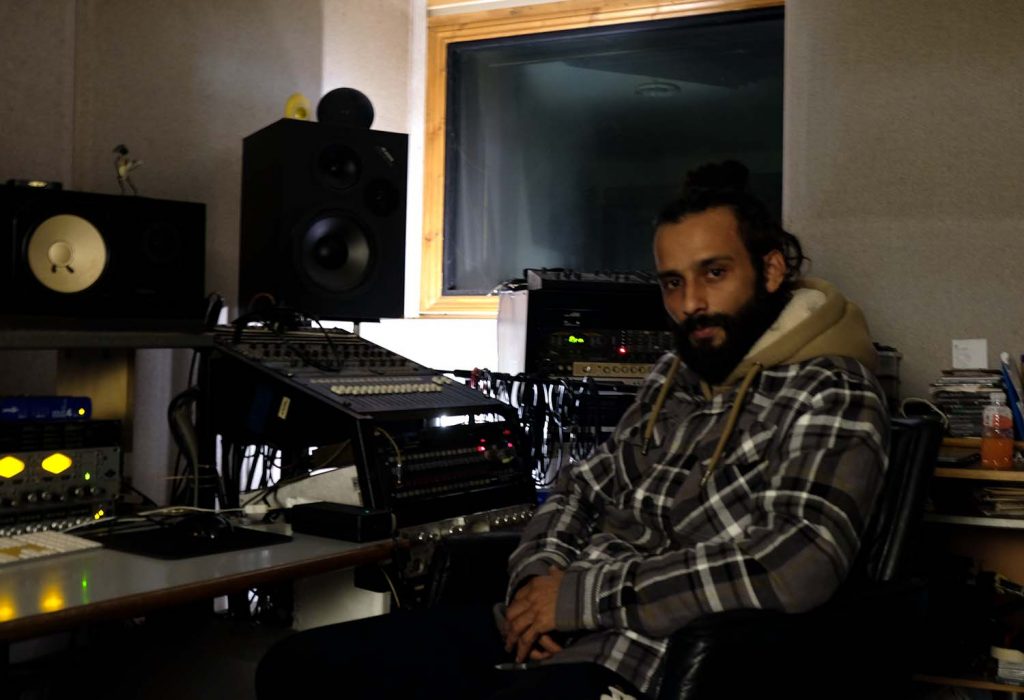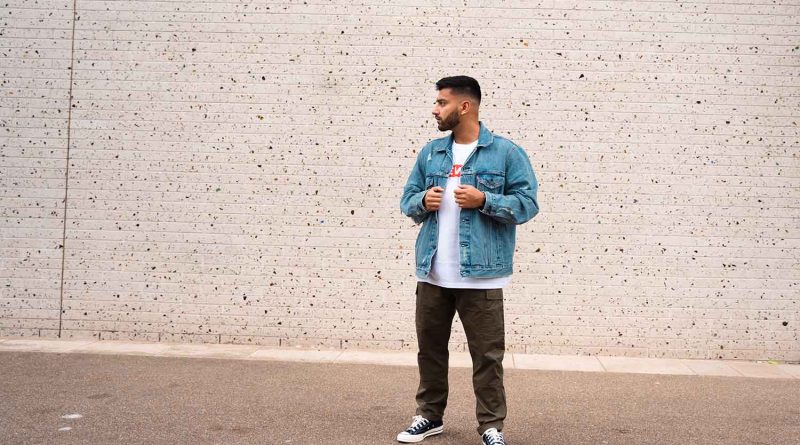How British-Bangladeshi musicians are using ‘Benglish’ to give cultural meaning to the next generation
In the final part of our four-part series on the hidden cost of losing Bangla, we examine how popular British-Bangladeshi musicians are making it their mission to keep their mother tongue alive.
Read this series from the start.
The previous three articles in this series have looked mostly at what the older generation thinks about Bengali and Sylheti disappearing amongst the younger generation. But what does the next generation think? Is their mother tongue still important to them and their identity?
The answer to this question is yes, but not in the same way as their parents and grandparents. One way to understand this change is to look at the music they listen to.
Young British Bangladeshis, of course, listen to all sorts of music. But British-Bangladeshi musicians are hugely popular amongst them.
Nish and Redz are two of the most popular of these musicians. They have a big following in Tower Hamlets and worldwide – with almost half a million YouTube subscribers each. Nish’s Standing by You has 57 million views on the platform. Redz has 25 million views on his song Shundori Furi Goh.
They are both young Londoners. Nish grew up in East London. Redz was born in Bangladesh and moved to the city when he was 15.
Their approach to music captures the changing relationship between language and identity in Tower Hamlets.
Redz sings mostly in Sylheti and Nish mostly in Bengali. But they both mix in English. For example, half of Standing by You is in English and the other half in Bengali.
Even though fewer young people are speaking Bengali or Sylheti, they still want to hear music in their mother tongue. Having English mixed in helps them relate to the lyrics.
The mixing of the two languages is known as ‘Benglish’ – a mash-up of Bengali or Sylheti and English. This is often how young British Bangladeshis speak with each other and with their parents.
Fatima Rajina, an academic at De Montfort University, says that in Tower Hamlets, you’ll often hear young people saying a ‘pretty much entirely English sentence and using maybe two Bengali words.’
She says Arabic, Somali and, interestingly, Italian words are sometimes thrown in, creating a new local slang. Italian is mixed in because many Italian Bangladeshis moved to the UK in the 2010s.
This new vernacular suggests that speaking Bengali and Sylheti is less important to these young people’s identity than to their parents and grandparents.
But the popularity of ‘Benglish’ songs shows that young people still care about their mother tongue. They don’t want to listen to music just in English, even if it’s their first language.
Ali Shahalom, a British-Bangladeshi comedian and TV presenter known by his stage name Ali Official, describes this phenomenon in his BBC documentary Being British Bangladeshi.
In the documentary, he tried to understand what it means to be British Bangladeshi in the 2020s. He concludes that it means ‘speaking English and Bangla in the same sentence.’
This is not about young people forgetting their heritage. It’s about language being a less important part of the way young people engage with it compared to their parents and grandparents because they are embracing both parts of their dual British and Bangladeshi identity.
Nish started singing when he was five. His parents are from the Sylhet region of Bangladesh and they taught him nursery rhymes in Sylheti to teach him the language. This was a way for his parents to reconnect with Bangladesh, thousands of miles away in East London.

Despite the importance of his mother tongue to his parents, when Nish started making music professionally he couldn’t avoid singing in English.
It’s his first language and he grew up listening to English music. As a teenager, he loved hip-hop, RnB and 2000s indie rock and pop music. He sang in English in his music GCSE and studied Western classical music at A-Level.
At the same time, when he started making music professionally it felt wrong not to sing in Bengali. He says he is ‘very much a London boy,’ but he is proud of the ‘multiple facets’ of his identity. Singing in Bengali and English was a way of expressing that.
These ‘multiple facets’ shine through in the sound of his music too. It wasn’t interesting to him to make music that sounded either Western or Bengali.
He wanted to mix the tones of RnB and hip hop with the ‘accents and embellishments of Bangla music.’
‘You go from this smooth, clean RnB sound to these pitch-bending riffs from South Asia. Mashing them together created this whole hybrid unique sound,’ he explains.
You go from this smooth, clean RnB sound to these pitch-bending riffs from South Asia. Mashing them together created this whole hybrid unique sound.’
NISH
Similarly, Redz grew up listening to Spanish and Arabic music along with Western hip hop and RnB. Still, he was fascinated by the sound of traditional Sylheti instruments like the harmonium and flute. And he saw how fewer and fewer people were speaking the language he grew up with. ‘Nowadays it’s disappearing,’ he says.
He felt that if something wasn’t done to reengage the younger generation with their mother tongue, it would disappear in the UK forever.
‘I wanted to create something in a different way, like a fusion. A type of sound for the younger generation…with our own spice,’ Redz says.
One way he does this is through his lyrics. By singing about everyday life and culture, he hopes to help young people feel proud of the Bangladeshi part of their identity.
One of Redz’s most popular songs is called Sylheti Fua, which means ‘Sylheti boy’. The song is about Bangladeshi involvement in the restaurant industry in Britain. Ninety per cent of Indian restaurants in Britain were owned by British Bangladeshis in 2021, according to The Guardian.
Sylheti Fua is about a man who is trying to win over a woman. The man explains to her that he owns two restaurants in London – ‘a very common code in our culture,’ Redz says.
Redz wants to use songs like Sylheti Fua to ‘deliver the message and remind our younger generation that this is our culture, this is our heritage, that’s how our forefathers supported us in this country, and therefore we belong.’
Nish and Redz have also both breathed new life into traditional Bangladeshi songs with their modern sound.
Redz remembers listening to Sylheti folk music when he was growing up in Bangladesh. These songs are often about life, struggle and family. It’s ‘Bob Marley type music,’ says Redz. It was important for him to bring these songs back to life because the younger generation may never have heard them before and they are an important part of the Bangladeshi culture.
He also realised that while many young people want to listen to music in their mother tongue, they also want enough bass so that when they play it in their car they ‘can feel the music.’
In Nish’s Bangla Medley music video, he sings lyrics written by traditional Sylheti folk musicians Shah Abdul Karim and Akrum Shah to a modern backing track while dancing around a Bangladeshi supermarket just off Brick Lane.
The juxtaposition of traditional lyrics with modern sound and visuals represents the new identity being formed and expressed by young British Bangladeshis. It’s about celebrating the past while also embracing change.
The huge popularity of these two singers suggests that this fusion resonates with young people. Fatima Rajina says that you hear their music at every British-Bangladeshi wedding. They both feel proud to have achieved this.
Redz wants to use his platform to help new Sylheti creatives – from musicians to dancers to videographers. ‘I’m trying to create an industry,’ he adds with a smile on his face.

Nish’s mission when he started making music was to get people to reconnect to their Bangladeshi heritage and language. It’s one of the ‘biggest compliments’ when someone tells him they have never listened to Bangla music but they’ve listened to him.
‘I’m like yes, I’m trying to make it accessible and it’s becoming accessible. If that’s happening in some capacity, then I can sleep at night,’ he says.
One of his proudest moments since becoming a professional musician came when his friend told him that his music helped her teach her children Bengali. The friend’s first language was English, which just came quicker to the tongue with her children. Yet she worried about them losing touch with their mother tongue.
But one day she saw her son singing along to one of Nish’s songs in Bangla. ‘[My] music helped him learn Bangla words – for me, that was one of the biggest compliments – that is really reconnecting,’ Nish says.
If you take a stroll down Whitechapel High Street or Brick Lane today, you will hear Bengali and Sylheti spoken all around you. What would it mean if this wasn’t the case?
No one I interviewed thinks this will happen soon, but almost everyone sees the change happening around them. ‘That’s the reality of diaspora,’ says Julie Begum, ‘In many ways, we’re not very different from anybody else, to be honest.’
It may be unavoidable that young people who grow up exposed to a different culture than their parents or grandparents will be less likely to speak their mother tongue.
Begum thinks the real question is whether this change is embraced positively or negatively.
Language has had a special place in Bangladeshi identity since the Language Martyrs were shot on 21 February 1952. But losing the level of fluency in Bangla and Sylheti that there was in Britain in the 1970s and 1980s doesn’t mean that Bangladeshi culture will disappear from Tower Hamlets. Instead, young people are finding new ways to express and be proud of their new mixed British and Bangladeshi identity.
Read the four-part series from the beginning.

